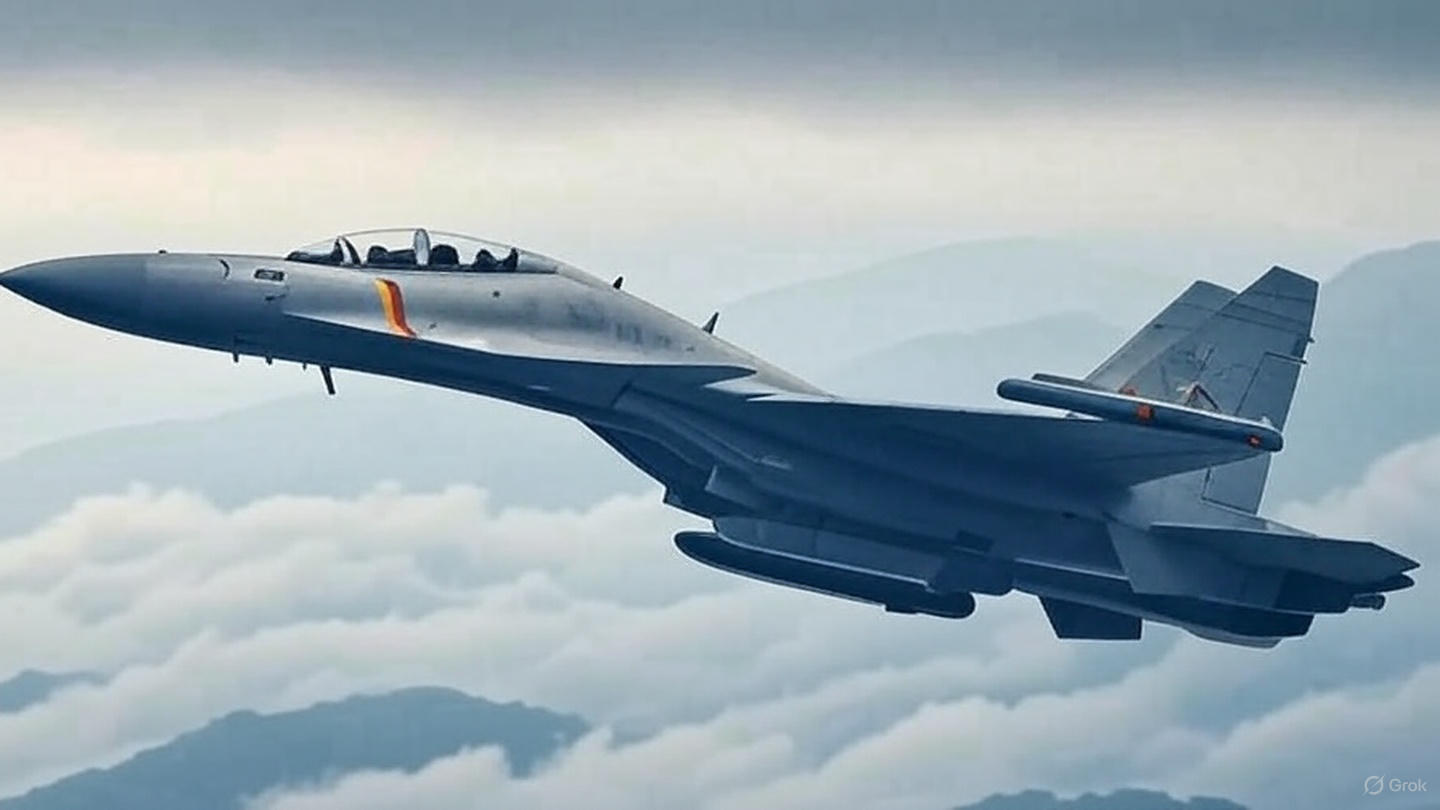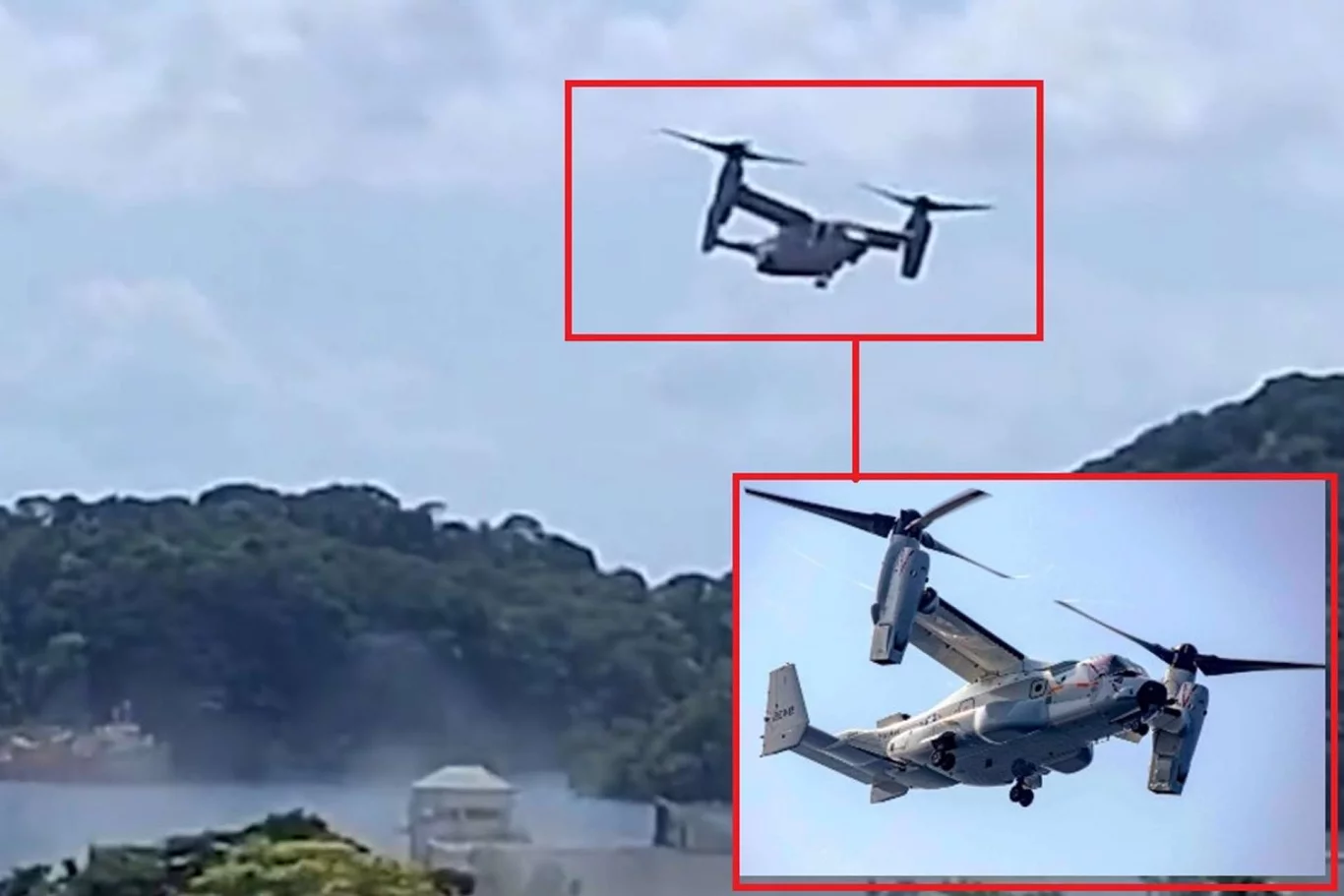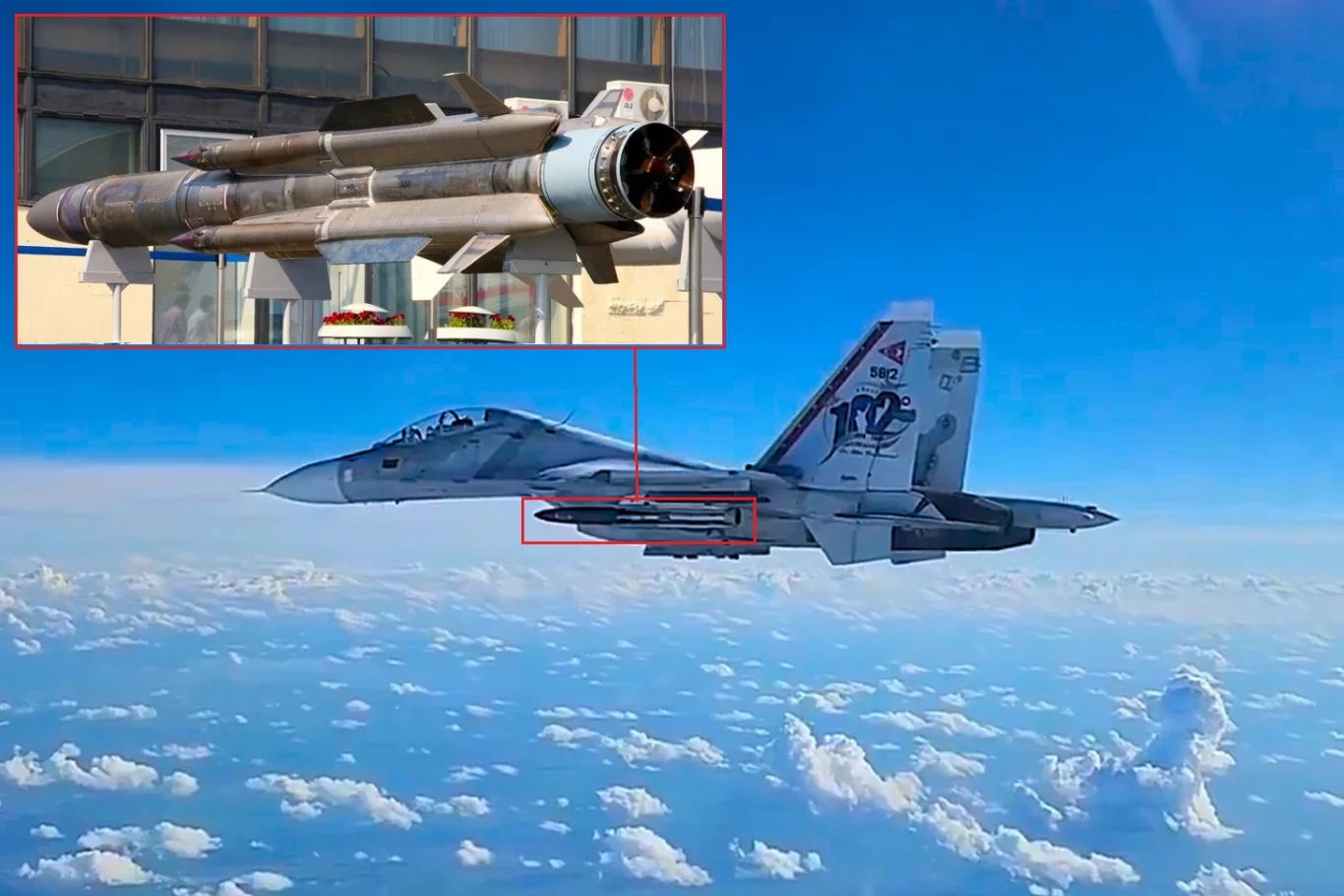In the shadowed waters of the South China Sea, where the horizon blurs into a haze of strategic tension, a new predator has taken flight. The Shenyang J-15DT, China’s latest carrier-based electronic warfare jet, cuts through the skies like a silent assassin, its sleek frame bristling with pods that can blind and deafen an enemy’s defenses. This is no mere aircraft; it is a harbinger of Beijing’s audacious bid to dominate the seas, a technological marvel born from the crucible of ambition and engineered for the cutting-edge Fujian, China’s first catapult-equipped aircraft carrier. As the People’s Liberation Army Navy (PLAN) flexes its muscles, the J-15DT stands as a testament to a nation no longer content to play second fiddle in the global naval arena.
The photograph that surfaced recently—grainy yet electrifying—captures the J-15DT in its element, soaring above the clouds with an arsenal of electronic warfare pods slung beneath its wings. Two pods hang under the engine intake ducts, another pair likely perched on the wingtips, their matte surfaces absorbing radar waves like a black hole swallows light. The aircraft bears the low-visibility insignia of the PLAN, its two-digit code “23” gleaming faintly in the sunlight, a subtle declaration of its operational status. Is this a frontline warrior or a cleverly disguised prototype? The truth, as always in the chess game of military secrecy, remains elusive. Yet the signs are unmistakable: the J-15DT is no longer a rumor but a reality, poised to reshape the balance of power in the Pacific.
The J-15DT is the crown jewel of China’s J-15 family, a lineage of carrier-based fighters derived from the Soviet-designed Su-33 Flanker. Unlike its predecessors, which relied on the ski-jump ramps of the Liaoning and Shandong for short takeoff but arrested recovery (STOBAR) operations, the J-15DT is built for the future. Its design screams catapult-assisted takeoff but arrested recovery (CATOBAR), tailored for the Fujian’s electromagnetic aircraft launch system (EMALS). The telltale signs are there: gray tailfin caps, modified wingtip pods, and a rumored two-part front landing gear door. Some whispers even suggest the dorsal airbrake has been stripped away, a sacrifice to streamline the jet for its new mission. This is a machine optimized for the heavy lifting of electronic warfare, capable of carrying massive fuel loads and jamming pods that can turn an enemy’s radar screens to static.
Imagine the scene aboard the Fujian, a 100,000-ton behemoth slicing through the waves. Three EMALS catapults hum with latent energy, ready to hurl the J-15DT into the sky with a force that shatters the limitations of STOBAR carriers. Unlike steam catapults, EMALS offers precision, reduced wear on airframes, and the ability to launch everything from heavy fighters to delicate drones. The J-15DT, with its tandem two-seat cockpit and humped forward fuselage, is designed to exploit this advantage. It can lift off with a full complement of weapons and fuel, its electronic warfare pods powered by the jet’s own engines—a potential weakness, as some analysts note, but one that China seems confident it can overcome.
The J-15DT’s mission is as bold as its design. Like the U.S. Navy’s EA-18G Growler, it is a flying arsenal of disruption, capable of jamming enemy radars, spoofing missile guidance systems, and escorting strike packages into hostile territory. But the J-15DT is more than a Growler clone. Reports suggest it may double as a strike platform, armed with anti-radiation missiles to hunt down enemy radar installations or even precision-guided munitions for surface targets. Its wingtip pods, larger and more sophisticated than those of its land-based cousin, the J-16D, hint at a capability to dominate the electromagnetic spectrum. Without the infrared search and track sensor or cannon of its predecessors, the J-15DT is a specialized beast, its airframe studded with conformal and blade antennas that give it an almost alien appearance.
The road to the J-15DT has been one of relentless innovation. The prototype J-15DH, its STOBAR-configured predecessor, first took flight in late 2016, a milestone that went largely unnoticed amid the clamor of global events. By October 2024, it was spotted conducting trials aboard the Shandong, its distinctive silhouette a stark contrast to the single-seat J-15s around it. The transition to the CATOBAR-capable J-15DT marks a quantum leap, aligning with China’s broader shift toward advanced carrier operations. The Fujian, expected to enter service by the end of 2025, is the linchpin of this strategy. Recent footage of fixed-wing aircraft trials aboard the carrier—released with a flourish on the eve of the PLA’s 98th anniversary—suggests that the J-15DT is already integrating into its air wing.
The strategic implications are profound. STOBAR carriers like the Liaoning and Shandong have always been hobbled by their reliance on ski-jump ramps, which limit the payload and range of their aircraft. A J-15DH launching from these ships would struggle to carry the heavy jamming pods and fuel needed for long-range electronic warfare missions. CATOBAR changes the game. The Fujian’s EMALS catapults allow the J-15DT to launch with maximum lethality, enabling it to escort strike groups deep into contested airspace or loiter at standoff ranges, sowing chaos in enemy defenses. This capability is a force multiplier, turning China’s carriers from regional players into global threats.
But the J-15DT is only one piece of a larger puzzle. The PLAN’s carrier air wing is evolving at breakneck speed, with the stealthy J-35 fighter poised to become its spearhead. Designed from the ground up for CATOBAR operations, the J-35 could eventually operate from STOBAR carriers as well, its low-observable design giving China a stealth advantage that rivals the U.S. Navy’s F-35C. Then there’s the KJ-600, a carrier-based airborne early warning and control (AEW&C) aircraft that mirrors the E-2 Hawkeye. With its ability to network and direct air operations, the KJ-600 will be the eyes and ears of the Fujian’s air wing, amplifying the J-15DT’s effectiveness.
Drones are another frontier. China’s development of uncrewed combat air vehicles (UCAVs) for carrier operations is accelerating, with designs ranging from strike drones to reconnaissance platforms. A new jet trainer, possibly based on the JL-10, has also emerged, hinting at a future where CATOBAR operations are routine and China’s naval aviators are trained to a razor’s edge. Even the two-seat J-15S, a mysterious variant with an unclear role—trainer, strike fighter, or testbed—has entered land-based service, with carrier operations likely on the horizon.
Yet challenges remain. The J-15DT’s reliance on the jet’s internal power for its electronic warfare pods raises questions about their effectiveness. Unlike the Growler’s pods, which use ram-air turbines for independent power, the J-15DT’s pods may be limited in output, potentially forcing trade-offs in how they are used. The complexity of EMALS operations also poses risks; a single malfunction could ground the Fujian’s air wing at a critical moment. And while China’s carrier program is advancing rapidly, it still lags behind the U.S. Navy in operational experience and logistical sophistication.
In the grand chessboard of the Pacific, the J-15DT is China’s latest gambit. It is a machine of deception and destruction, a silent sting that can paralyze an enemy’s defenses before they know what hit them. As the Fujian prepares to join the PLAN’s fleet, the J-15DT will be its sword and shield, a symbol of China’s relentless drive to challenge the maritime status quo. The world is watching, and the skies above the South China Sea will never be the same.
For now, the J-15DT flies under the radar—literally and figuratively. But in the high-stakes game of naval supremacy, where every technological leap shifts the balance of power, China’s silent sting is a warning: the dragon is awake, and its wings are spreading.




